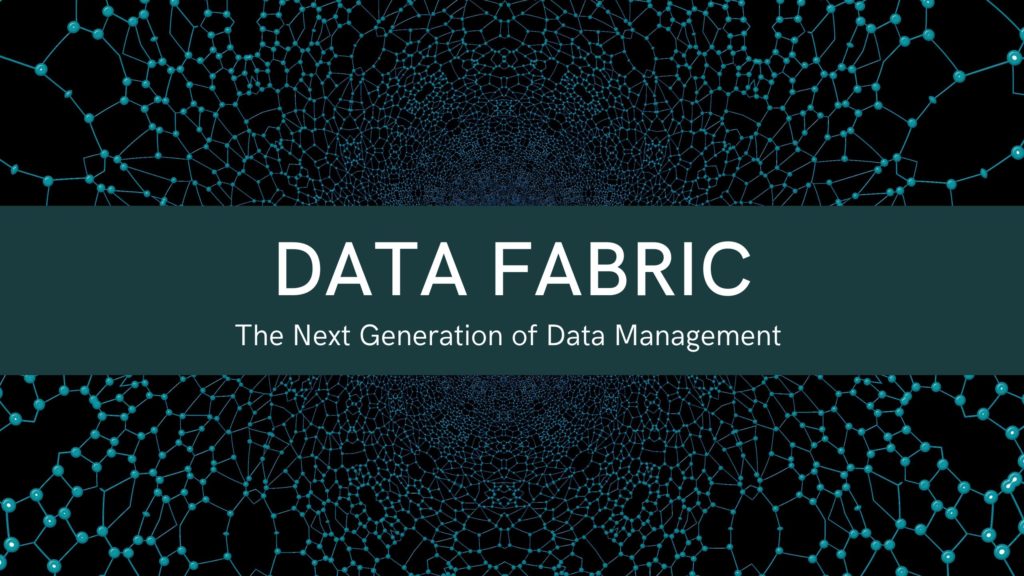Understanding Data Fabric, its Key Components & Benefits.
Effective data management is crucial in this era. The daily rapid evolution of data has made data management extremely difficult. The company faces numerous obstacles that hinder it from utilizing its data to its fullest potential, including disparate data sources, difficult data integration, and restricted access. The developing data idea known as data fabric can help organizations overcome these obstacles.

Data fabric integrates and connects to your organization’s data while removing the complexities involved in data management and access. The goal of data fabric is to use an organization’s data at its full potential and make it useful to many business users, including data scientists, data analysts, and data engineers.
Related Reading: Centralized Data Storage System: How your Business can benefit?
What is Data Fabric?
Data fabric is a pattern or architecture that enables organizations to centrally store, manage, monitor, orchestrate, and govern data regardless of where they exist across multiple clouds, on-premises, or edge systems. Data fabric combines significant data management technologies such as data ingestion, discovery, orchestration, processing, and access.
Data fabric helps manage a huge volume of data stored in different organizational environments. It provides a unified data access platform, enabling self-service, governance, and automatic data integration.
Key Components of Data Fabric
A data fabric consists of several components to provide real-time data integration from dispersed sources. Let’s discuss a few significant components of data fabric:
- Augmented Knowledge Graph: The knowledge graph is an abstraction layer that provides a common understanding of business, data, and its augmentation. It represents the business and technical relationships within and across the business domains. Smart graphs auto-discover the system’s new and old relationships and enable data connectivity.
- Centralized Data Governance: Centralized data governance assures data quality and manages it safely in a secure environment while complying with business rules and regulations.
- Centralized Data Integration: Centralized data integration retrieves data from diversified sources and integrates to a single platform in any method, ETL, CDC, APIs, and Virtualization.
- Centralized Data Catalog: A centralized data catalog categorizes and catalogs data assets and visually portrays information supply chains. An AI-powered data catalog connects all enterprise data and enables automatic data discovery.
- Data Orchestration and DataOps: To use the data for global analysis, data orchestration mixes data from many sources inside a data fabric. At every level of the end-to-end workflow, data orchestration, and data operations use data to coordinate the operations. You have control over when and how often pipes are performed, as well as how to handle the data the pipelines generate.
Related Reading: 3 Steps to implement a Modern Data Strategy for your Business
Benefits of Data Fabric
- Automated Data Governance: Automatic data governance helps companies ensure that specific governance and security requirements are followed regardless of where the data is accessible by automatically applying data governance policies, rules, and regulations.
- Automated Data Integration: Automatic data integration helps data users and data engineers significantly by reducing manual workloads. Optimized data integration accelerates data transmissions and delivery across the organization.
- Scale Data Processing Capabilities as Needed: Data fabric offers a scalable solution and strong data processing capabilities for managing your company data in a single environment when the volume of data increases.
- Data Democratization: Data fabric architecture enables businesses to implement seamless data access methods that allow business users to obtain the required data more quickly and easily, allowing them to take quick decisions.
- Reduced Data Silos: A data silo refers to the data owned by one business unit and cannot be accessible to other business units. Data fabric offers a unified data management architecture that makes data accessible to any business unit operating inside the same organization.
- Improved Data Management: Data fabric architecture enables you to manage all your organization’s data on a single, unified platform, making it easier for you to access, track, and utilize your data to generate possible insights.
- Real-time Data Analysis: Data fabric architecture supports real-time data analysis, helping you make quick business decisions.
Stay ahead with updated trends. Download the free Big Data Infographic!
Start Your Journey Today
Do you wish to implement an effective data management strategy for your business? Data fabric is the best option for you.
Reach us today!!! iLink Digital has good experience working with a wide range of clients across different industries. Our professionals will understand the project’s requirements and propose an effective data fabric pattern to accelerate your business.


